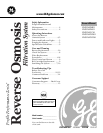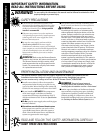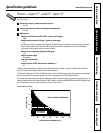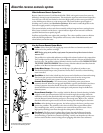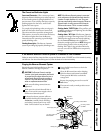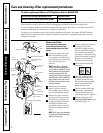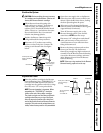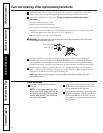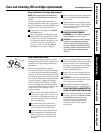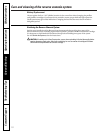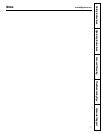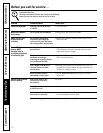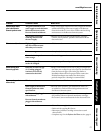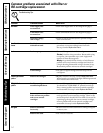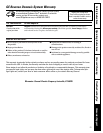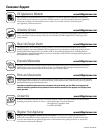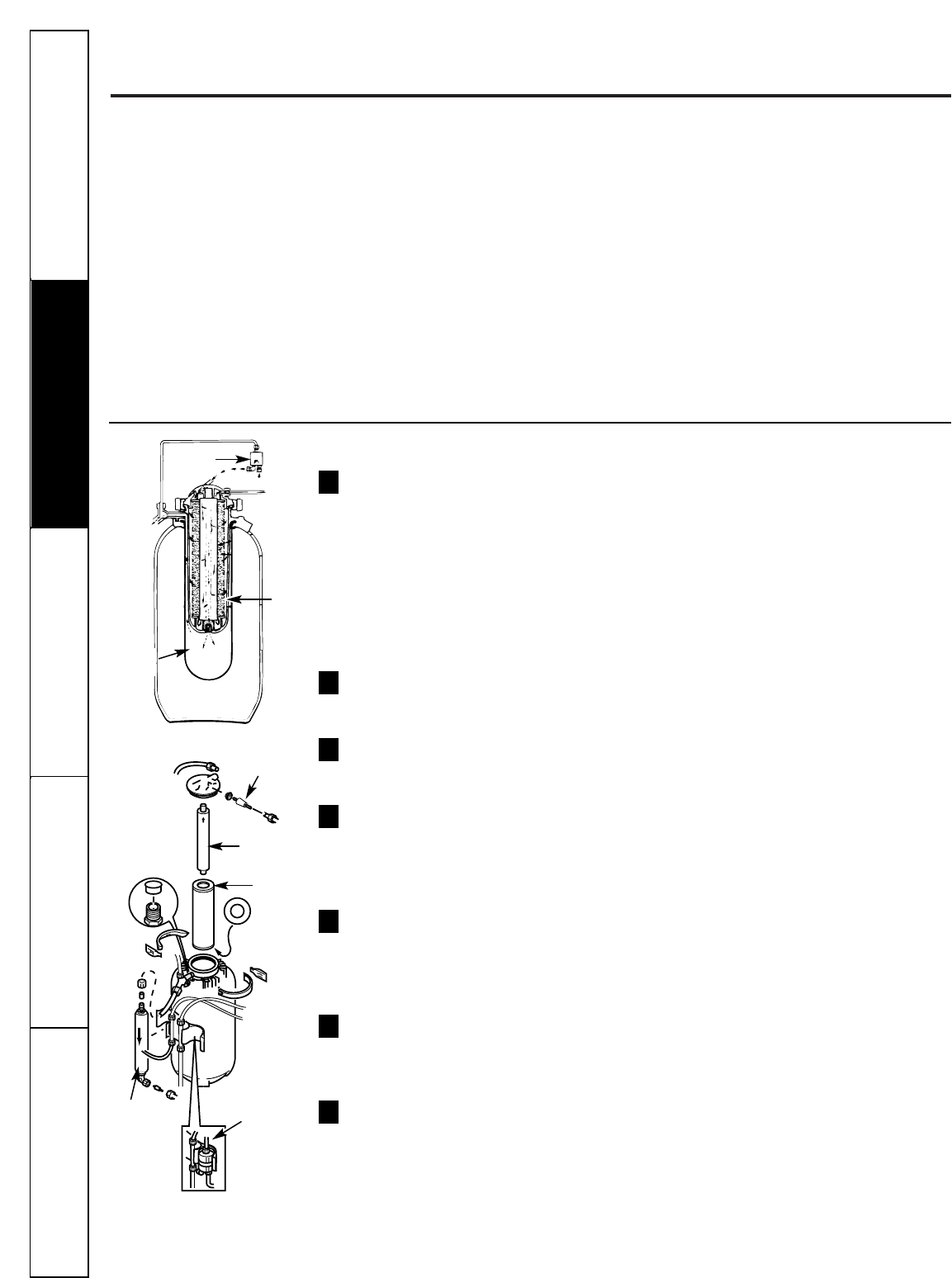
About the reverse osmosis system.
UP
What the Reverse Osmosis System Does
Reverse Osmosis removes Total Dissolved Solids (TDS) and organic matter from water by
diffusing it through a special membrane. The membrane separates minerals and impurities
from the water and they are flushed to the drain. High quality product water goes directly
to the drinking water faucet or to the storage tank. The system makes a good supply of
drinking water each day (see
Specification guidelines
). How much it makes depends on the
feed water supply pressure, temperature and quality.
The system includes an electronic faucet assembly with an integrated water testing feature.
When water is taken from the faucet, a green indicator light means removal is within the
specified limits and water quality is good.
Prefilters and postfilters are replaceable cartridges. The carbon prefilter removes chlorine
while also filtering sediments. The postfilter removes any other undesirable tastes and
odors before you use the water.
How the Reverse Osmosis System Works
Prefilter
—Water from the cold supply pipe enters the Reverse Osmosis assembly and
is directed to the prefilter cartridge.
NOTE: Before going to the prefilter, supply water first passes through the electronics box to
measure TDS.
The prefilter is a replaceable sediment cartridge with activated carbon in its composition.
The
cartridge removes sand, silt, dirt, other sediments and up to 2.0 ppm of chlorine from
the feed water. The prefilter reduces chlorine in the feed water because
CHLORINE DESTROYS
THE REVERSE OSMOSIS MEMBRANE.
Filtered, clean, chlorine-reduced water flows from the
prefilter to the Reverse Osmosis membrane cartridge.
Product Water Storage—
The storage area holds up to 1.9 gallons of product water.
The flexible bladder keeps water pressurized for fast flow to the faucet when drinking
water is needed.
Check Valve—
A check valve is built into the bottom end of the Reverse Osmosis housing.
The check valve prevents a backward flow of product water from the storage area.
A backward flow could cause rupture of the Reverse Osmosis membrane.
Automatic Shutoff Assembly—
To conserve water, the drinking water system has an
automatic shutoff. When the storage tank has filled to capacity and the RO water faucet
is closed, pressure closes the shutoff. Water flow to the Reverse Osmosis housing is
shutoff until Reverse Osmosis water is used again, and pressure drops in the Reverse
Osmosis system.
Reverse Osmosis Cartridge—
The cartridge, inside the Reverse Osmosis housing, includes
a tightly wound, special membrane. Water is forced through the cartridge where the
membrane removes the dissolved solids and organic matter. High quality product water
exits the Reverse Osmosis housing and goes to the storage area. Reject water, with the
dissolved solids and organic matter, leaves the housing and is discharged to the drain.
Postfilter—
After leaving the storage area, but before going to the faucet, product water
goes to the postfilter. The postfilter is also the activated carbon type sediment filter.
Any remaining tastes, odors, or sediments are removed from product water. Clean,
high quality drinking water flows through the tubing and to the faucet.
Flow Control—
The flow control regulates flow of water through the Reverse Osmosis
cartridge at the required rate to produce high quality water. The control is located in
the drain tubing, at the Reverse Osmosis cap fitting. A small, cone-shaped screen fits over
the front end of the flow control to help prevent plugging with drain water sediments.
7
6
5
4
3
2
1
Further description of this illustration
is in the Care and Cleaning section.
6
1
1
2
3
4
5
7
Automatic
shutoff
assembly
4
Operating Instructions
Safety InstructionsCare and CleaningTroubleshooting TipsConsumer Support



